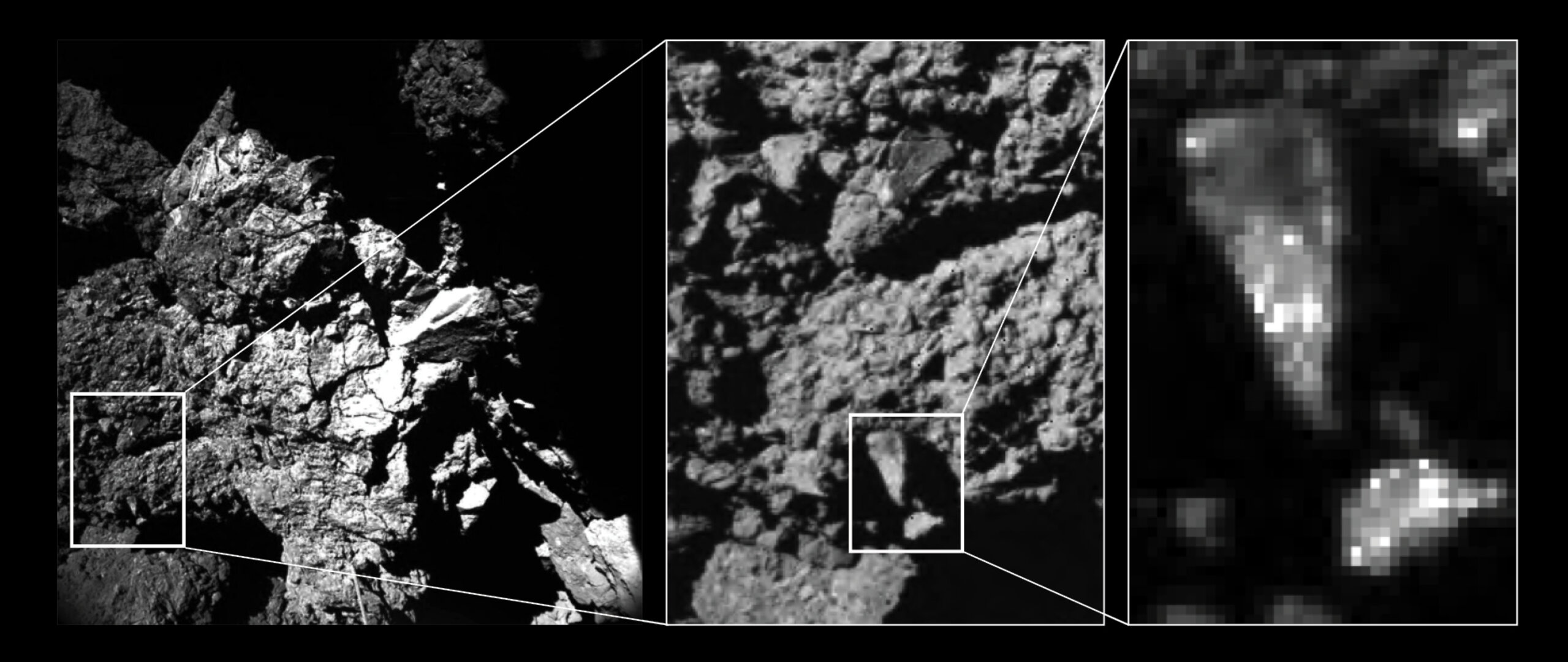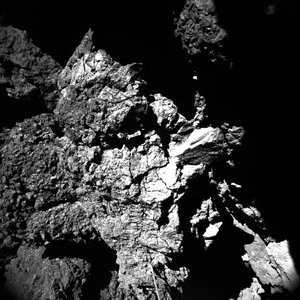

Science & Exploration
Brightness variations of comet surface
Zooming in to a portion of the fractured cliff face imaged by CIVA camera 4 reveals brightness variations in the comet’s surface properties down to centimetre and millimetre scales. The dominant constituents are very dark conglomerates, likely made of organics. The brighter spots could represent mineral grains, perhaps even pointing to ice-rich materials.
The left hand image shows one of the CONSERT antennas in the foreground, which seems to be in contact with the nucleus. The dimensions of the antenna, 5 mm in diameter and 693 mm long, help to provide a scale to the image.





